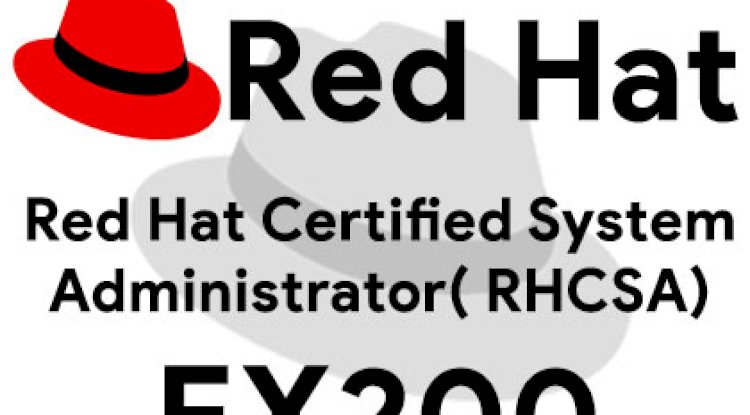Inside Illusive | How Deception Technology Uses Fake Data to Trap Hackers and Protect Enterprises from Zero-Day Attacks in 2025
In 2025, as cyber threats become more sophisticated, organizations are embracing deception technology like Illusive Threat Detection to gain the upper hand. Illusive works by planting fake credentials, decoy systems, and misleading digital artifacts across enterprise networks. When attackers interact with these traps, they expose themselves, allowing real-time alerting and in-depth forensics. This proactive method is proving especially effective against zero-day attacks, lateral movement, and insider threats, making it a cornerstone of modern Zero Trust security strategies. This blog explores how Illusive works, the benefits it offers, and why it is gaining momentum as a critical component of cybersecurity frameworks in 2025.
Introduction: The Rise of Deception Technology in Cybersecurity
In 2025, cyberattacks have become more sophisticated, stealthier, and more dangerous than ever before. With traditional firewalls, antivirus software, and endpoint detection tools struggling to keep up with rapidly evolving threats, organizations are turning to a newer and more proactive strategy: deception technology. Among the top players in this space is Illusive, a cutting-edge solution that flips the script by luring attackers into fake traps rather than waiting to react after a breach.
This blog explores how Illusive Threat Detection uses decoy credentials, fake systems, and misleading pathways to confuse attackers, alert defenders in real time, and gather valuable intelligence—all while protecting critical systems from actual harm. Let’s dive deep into how this innovative tool works and why it’s a must-have in today’s cybersecurity defense stack.
What is Illusive Threat Detection?
Illusive is a deception-based cybersecurity platform that plants realistic but fake data (like credentials, files, applications, and servers) across an organization's environment. When attackers interact with these false assets, they reveal their presence and intentions—allowing defenders to act quickly.
Instead of relying only on signatures or behavioral analysis, Illusive creates a maze of misleading options for intruders, increasing the attacker's risk of exposure with every move they make.
How Illusive Works: The Power of Misdirection
1. Deployment of Deceptive Artifacts
Illusive spreads thousands of deceptive credentials, mapped drives, and registry keys across endpoints and servers. These artifacts are indistinguishable from real data to an attacker but lead only to monitored traps.
2. Active Engagement with Decoys
If an attacker uses a fake credential or tries to access a decoy system, Illusive instantly detects it. These decoy interactions trigger alerts that are far more reliable than traditional anomaly detection tools.
3. Real-Time Alerting and Forensic Insights
Once an attacker is caught in the deception net, Illusive not only alerts defenders but also collects forensic data—such as tools used, commands executed, and the attacker's pathway through the network. This intelligence helps with faster incident response and threat hunting.
Why Deception is Trending in 2025
With zero-day exploits, insider threats, and supply chain attacks on the rise, traditional detection methods often miss early warning signs of compromise. Illusive’s deception technology offers a low-noise, high-fidelity approach that strengthens detection, shortens dwell time, and reduces false positives.
Key reasons for its popularity in 2025:
-
Stealthy detection without tipping off attackers
-
No dependence on known attack signatures
-
Faster Mean Time to Detection (MTTD)
-
Minimal disruption to regular IT operations
-
Better visibility into attacker tactics and movement
Top Use Cases for Illusive
Stopping Lateral Movement
Attackers often move laterally inside a network using stolen credentials. Illusive places false credentials and pathways that, when used, immediately reveal unauthorized movement.
Insider Threat Detection
Malicious insiders who abuse their privileges are hard to catch. By engaging with decoy data, insiders expose their true intent.
Zero Trust Reinforcement
In a Zero Trust model, Illusive provides in-network visibility and ensures that users and devices can’t access anything they shouldn’t—even if credentials are compromised.
Advanced Persistent Threat (APT) Mitigation
APT actors operate over long periods. Illusive disrupts their timeline, wastes their resources, and improves chances of early detection.
Benefits of Illusive Deception Technology
-
No behavioral baselining needed
-
Integrates with SIEM and SOAR platforms
-
Lightweight deployment without endpoint performance hit
-
Works across on-prem, cloud, and hybrid environments
-
Supports compliance with regulations like GDPR, HIPAA, and CMMC
Real-World Example: Illusive in Action
A global financial services firm deployed Illusive across 10,000 endpoints. Within weeks, they detected a red team engagement where ethical hackers attempted lateral movement using a “compromised” credential.
That credential, however, was planted by Illusive. The moment it was used, the security team was alerted. They traced the attacker’s behavior, identified gaps in endpoint configurations, and improved their Zero Trust enforcement—all without actual damage to the business.
Emerging Trends in Deception Technology
As AI-powered threats evolve, deception tools are also integrating AI and machine learning to dynamically adapt decoys based on attacker behavior. Other trends include:
-
Automated decoy generation
-
Integration with XDR platforms
-
Behavioral deception that simulates user patterns
-
Cloud deception for SaaS and IaaS environments
Final Thoughts: Turning the Tables on Hackers
Cybersecurity has long been a reactive game—patching vulnerabilities and chasing alerts. But with Illusive’s deception-based approach, defenders now have the upper hand. By planting traps, gathering real-time intel, and delaying adversaries, organizations can shift from defense to offense, stopping threats before damage occurs.
In a digital world where trust is earned and deception is strategic, Illusive provides the invisible net that fools attackers and protects your crown jewels.
FAQs
What is Illusive Threat Detection?
Illusive Threat Detection is a cybersecurity tool that uses deception technology to identify attackers by planting fake data and systems in a network.
How does deception technology work?
Deception technology works by creating decoys—like fake credentials, files, and servers—that look legitimate to attackers. Once accessed, these decoys trigger alerts.
Why is Illusive trending in 2025?
Because cyberattacks are getting stealthier, Illusive’s proactive approach helps detect threats early without relying on traditional signature-based methods.
Can Illusive detect zero-day exploits?
Yes, it is effective against zero-day exploits since it detects behavior rather than relying on known malware signatures.
What types of fake data does Illusive deploy?
Illusive can deploy fake credentials, registry entries, mapped drives, processes, files, and even entire decoy systems.
Does Illusive require endpoint agents?
Illusive is agentless for most of its functions, which means it doesn’t overload systems or require heavy installations.
How does Illusive alert defenders?
It instantly sends alerts through integrated platforms like SIEM or SOAR when fake assets are accessed.
Can attackers identify the decoys?
The decoys are designed to be indistinguishable from real assets, making it extremely difficult for attackers to tell them apart.
What kind of threats can Illusive detect?
It can detect advanced persistent threats (APTs), insider threats, lateral movement, and credential theft.
Is Illusive compatible with cloud environments?
Yes, Illusive supports on-premises, cloud, and hybrid environments.
Does Illusive work with Zero Trust architecture?
Absolutely. Illusive enhances Zero Trust by identifying and isolating anomalous access attempts inside the network.
Can Illusive stop ransomware?
While Illusive doesn’t block ransomware directly, it can detect lateral movement and attacker behavior early enough to prevent its spread.
How does Illusive help with insider threats?
By placing decoy data in areas insiders might access, Illusive can expose malicious internal behavior that would otherwise go unnoticed.
Is Illusive difficult to deploy?
No, it's designed for fast, scalable deployment with minimal impact on existing systems.
What industries benefit from using Illusive?
Financial services, healthcare, government, and critical infrastructure sectors all benefit due to their high sensitivity to cyber threats.
How does Illusive assist during threat hunting?
It provides forensic data like attacker tools, techniques, and behavior patterns, aiding analysts in incident investigation.
Can Illusive integrate with other security tools?
Yes, it integrates with most modern SOC tools including Splunk, Palo Alto Cortex XSOAR, and Microsoft Sentinel.
What is the impact on system performance?
Since Illusive is agentless and lightweight, it has virtually no impact on endpoint performance.
Does Illusive use AI or machine learning?
It’s beginning to incorporate AI to create adaptive deception strategies based on attacker behavior.
How is Illusive different from traditional EDR tools?
EDR tools react to detected threats, while Illusive proactively deceives and traps attackers before they can act.
Can Illusive reduce false positives?
Yes, alerts from deceptive assets are highly reliable since no legitimate user should access them.
Is Illusive useful during red team exercises?
Yes, red teams often fall for decoys, which proves the tool’s real-world effectiveness.
Does Illusive help with compliance?
Yes, it supports compliance with standards like NIST, GDPR, HIPAA, and more by enhancing security posture.
Can it be used in OT or ICS environments?
It’s more commonly used in IT environments, but adaptation to OT is growing.
How often should deception assets be updated?
It’s good practice to rotate or refresh decoy assets periodically to maintain credibility.
Is Illusive suitable for small businesses?
While primarily designed for enterprises, smaller organizations with high-value assets can also benefit.
How does Illusive collect attacker behavior data?
By monitoring interactions with decoy systems and analyzing attacker movement and commands.
Can Illusive prevent data exfiltration?
It helps by identifying and stopping attackers before they can reach sensitive data.
What makes Illusive unique in the cybersecurity space?
Its proactive, low-noise approach to detection and intelligence gathering through deception sets it apart from traditional security tools.













![Top 10 Ethical Hackers in the World [2025]](https://www.webasha.com/blog/uploads/images/202408/image_100x75_66c2f983c207b.webp)

![[2025] Top 100+ VAPT Interview Questions and Answers](https://www.webasha.com/blog/uploads/images/image_100x75_6512b1e4b64f7.jpg)








